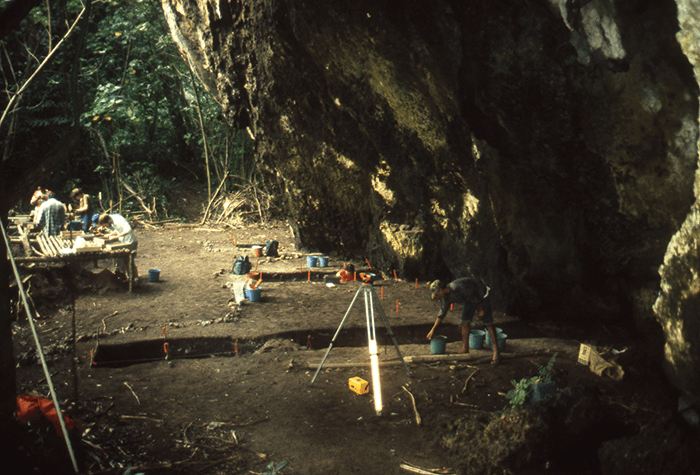The prehistoric settlement of the Pacific Islands is thought to have involved one of the great marine migrations in human history, with modern research suggesting that colonization and subsequent trade extended across vast portions of the South Pacific. Marshall Weisler from the University of Queensland has been “sourcing” stone artifacts to try and determine whether trade continued far longer than previously thought.


After his long-term study on the island of Molokai in the Hawaiian Islands, Weisler was interested to find out if the material from stone adzes (tools made form volcanic rock) he had found at numerous habitation sites on the leeward side of the island were “petrographically unique.” Weisler describes inductively-coupled plasma mass spectrometry (ICP-MS) as the “gold standard” for analyzing fine-grained basalt artifacts, such as Polynesian adze materials. “MS offers tremendous benefits compared to older, less robust geochemical techniques. We analyze about 50 trace elements and three isotope suites (Pb, Nd, Sr) that allow us to understand the geochemical variability of the sources or quarries, then analyze the artifacts using the same range of elements and isotopes and look for quarry matches,” he says. “Over the past few decades, I have become more involved with geochemical techniques, as the results are precise, accurate and fully quantitative.” Focussing on adze materials from a habitation rockshelter on the island of Mangaia, southern Cook Islands, East Polynesia, the geochemical data, when coupled with the associated dates from the excavated archaeological site, allowed Weisler’s research team to reconstruct the ancient routes of contact. They discovered that over a third of the adzes had come from other island groups, demonstrating that the Polynesian voyaging network extended beyond the Cook Islands to include the Austral, Samoa, and Marquesas archipelagos – a distance of up to 2400 km. Based on the dating of particular adzes (400 to 500 years old) originating from the Tatangamatau quarry, Tutuila Island (Samoa), the team postulate that Polynesian inter-archipelago voyaging lasted up to the 1600s, suggesting that long-distance interaction continued to influence the development of social structures in East Polynesia well after initial colonization.
References
- MI Weisler et al, “Cook Island artifact geochemistry demonstrates spatial and temporal extent of pre-European interarchipelago voyaging in East Polynesia”, Proc. Natl. Acad. Sci. USA, 29, 8150-8155 (2016)




